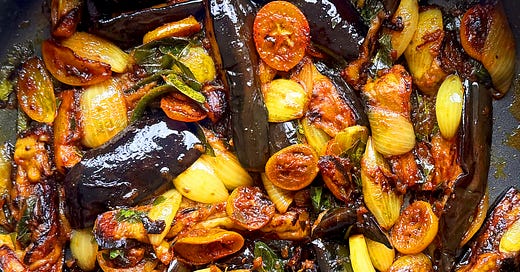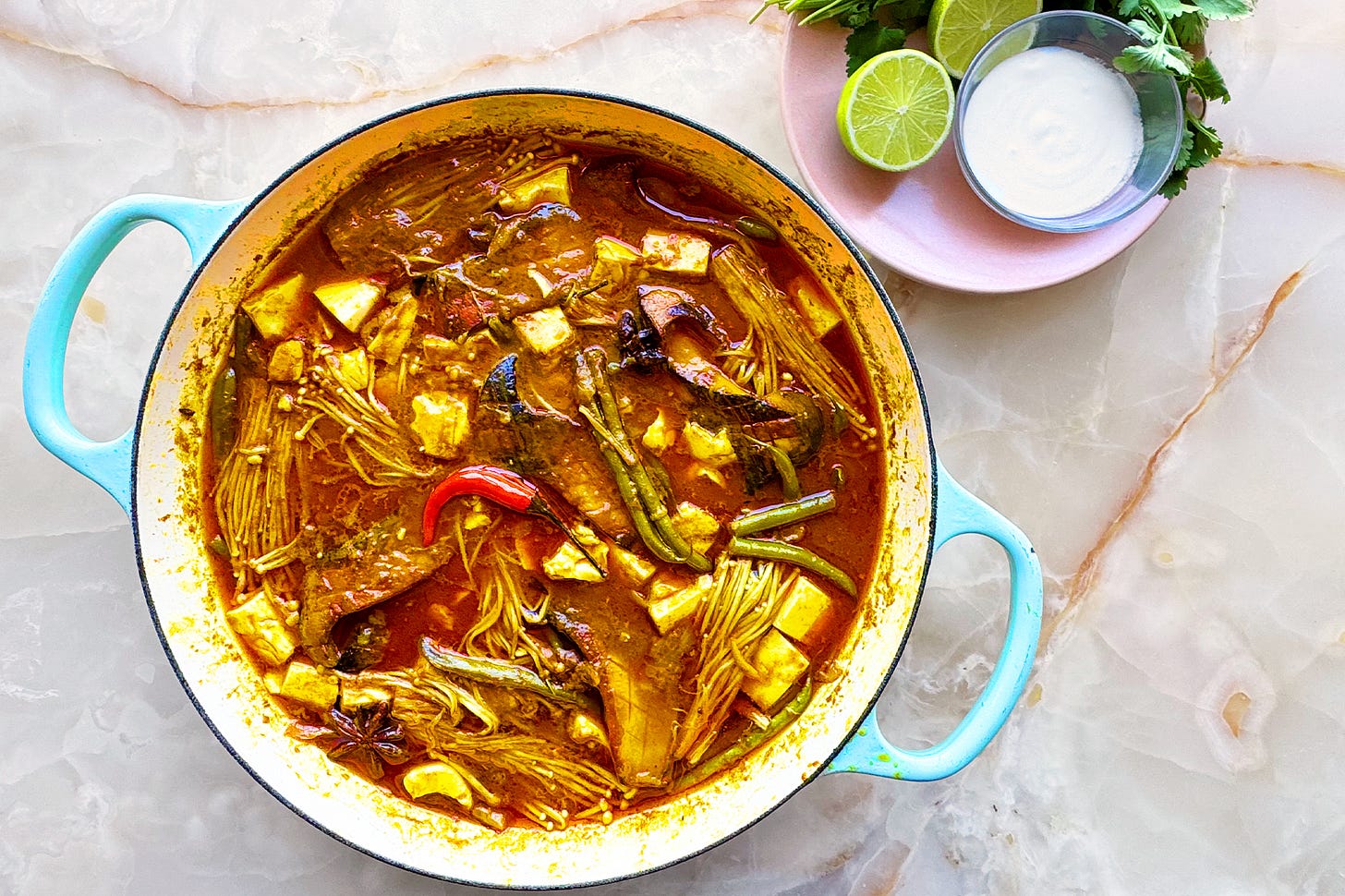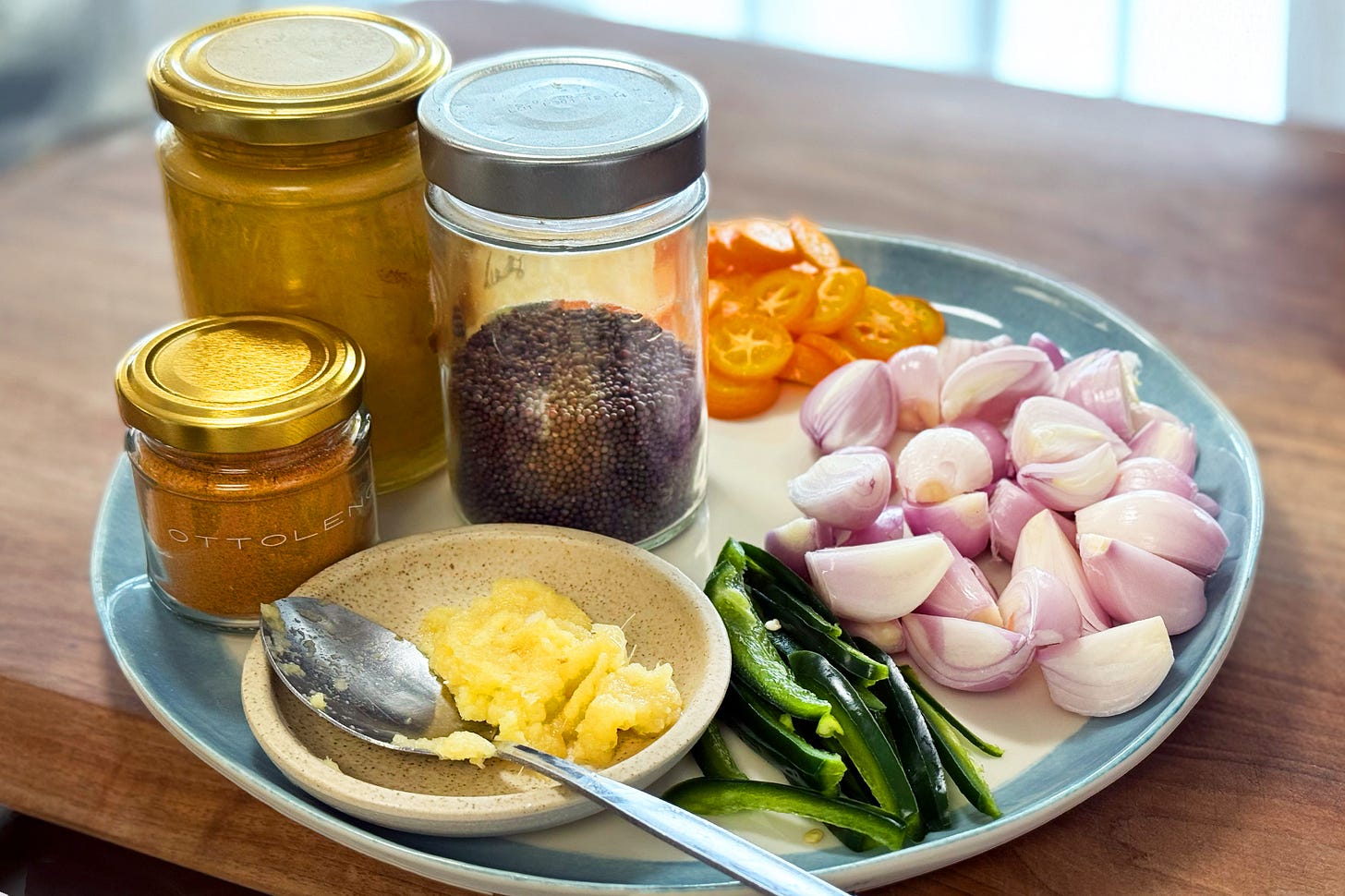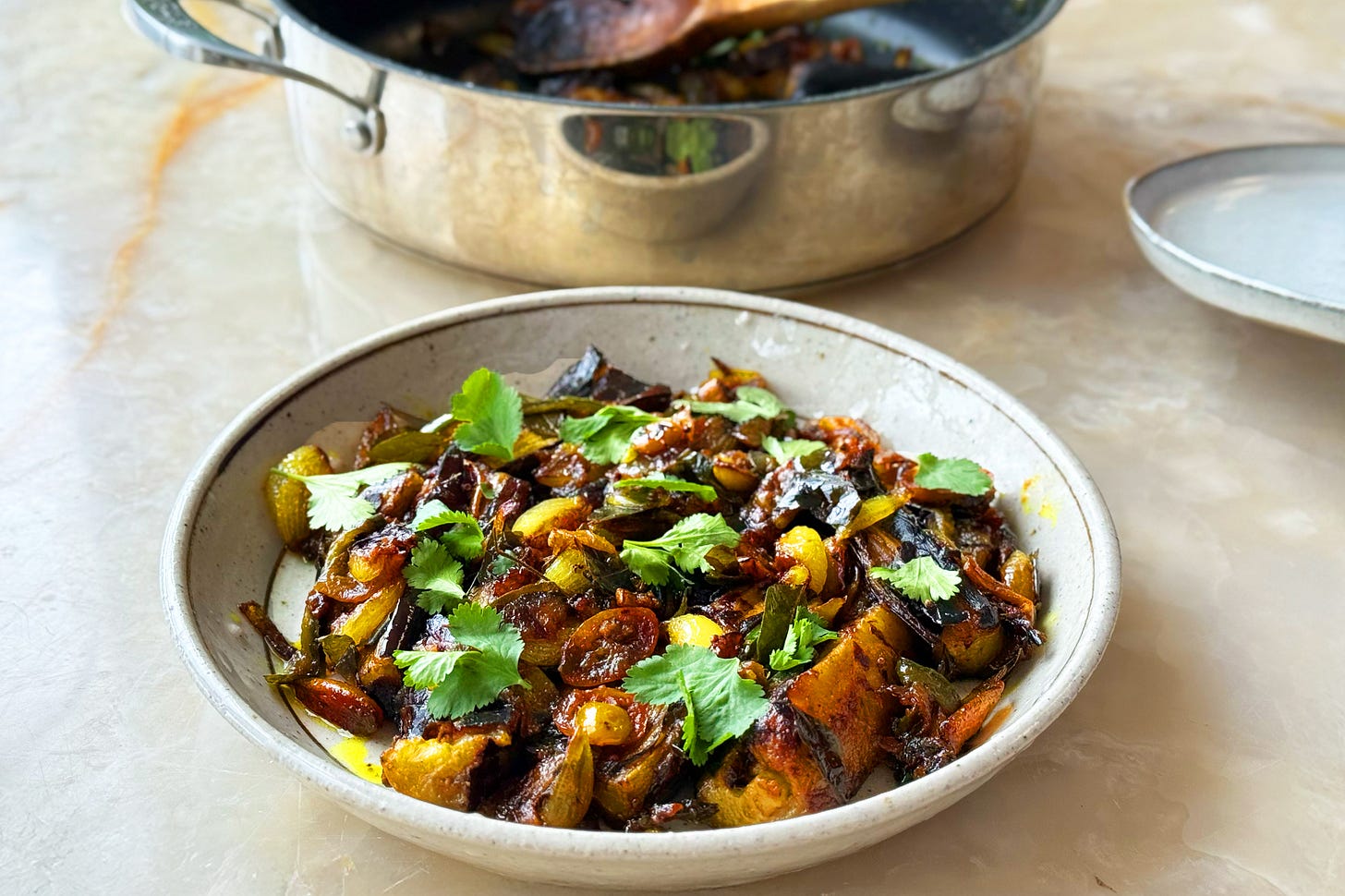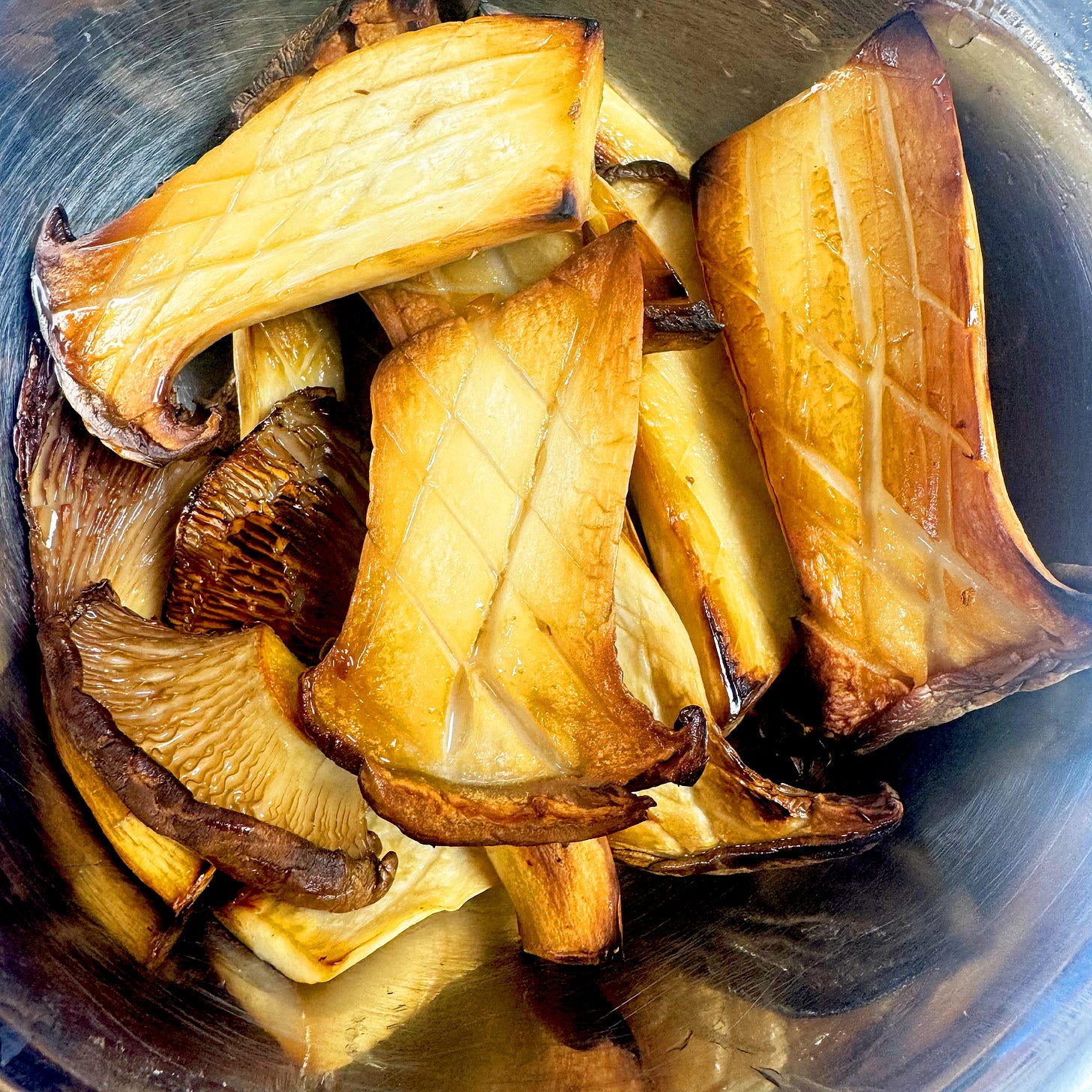So much of what I do involves gathering ideas from different sources, processing them, and then turning them into recipes for the hungry cooking public.
The greatest accolade is when one of these hits the spot and then becomes a household staple somewhere. “I have to tell you”, someone might say, “your soba noodles are on quick rotation in our house, and now my grownup kids cook it for their own families”. Music to my ears. Recipe for eternity…
Occasionally, the process is reversed, and I receive a recipe from someone who wants to convert me to their family staple. Like, when I was in Geneva a few months ago for our restaurant opening, Amiyna Farouque handed me a piece of paper. "It's one of my favourite things to make,” she told me, “A Sri Lankan aubergine coconut curry."
So if you're reading this, Amiyna, thank you for trusting me with your family secret. But I also owe you an apology as - you’ve seen this coming… - I just had to play around with it. I couldn’t help myself.
This happens often (something I’m very grateful for)... people hand me recipes, each is a little window into someone else’s kitchen, their histories, their families. It's a particular kind of generosity that I've always found moving. I then have a play and make it my own, hoping that the original spirit isn’t lost in the process.
This week, I’m making the reimagined aubergine curry from Amiyna (now a cross between a curry and a pickle) and a take on Singapore chilli crab (now mushroom) that Tony Tan made for us in the test kitchen.
So that I don’t run out of ideas, I'd love to see some of your recipes. Send them via email (or comments) and we'll share some in the coming months, inevitably, with my own twist.
Wambatu Moju (a Sri Lankan inspired aubergine pickle)
The original dish Amiyna gave me was a curry – simmered, saucy, comforting. After several attempts, we found that removing the coconut milk created something more concentrated, more intense.
So this ended up as a multi-puprose dish, somewhere between a pickle and a curry, pretty much a take on Sri Lankan Wambatu Moju, an aubergine relish with endless applications. We kept a jar for a month in the fridge, stealing spoonfuls every few days to spoon over rice, and watched the flavours deepen and mellow.
In Sri Lankan cooking, this pickle is often made with deep-fried aubergine strips, vinegar, and an enthusiastic amount of chilli. Our version keeps that essential vinegar tang but adds kumquats for brightness (you can replace with tangerines if you can’t find kumquats).
The 'zebra' technique (using a peeler to remove strips of skin at intervals) borrows from Turkish cooking, where aubergine skin isn't considered particularly delicious. It's a small intervention that makes a notable difference – taking away that slight bitterness while keeping enough skin for texture and colour.
You can eat this with rotis or rice for a simple meal, pair it with roasted fish or grilled meat, or (my current favourite) add it to a sandwich with something sharp and tangy – feta or a properly mature cheddar.
Tangy Mushroom Curry
A few months back, Tony Tan taught a brilliant class in our test kitchen that left everyone swooning over his Singapore chilli crab.
The rich sauce he created struck me as perfect for mushrooms, which is how this recipe began. Then Chaya's obsession with sour curries (like her black chickpea and mango curry here) pulled it in another direction altogether.
We've kept the base of Tony's sauce, adding a little tamarind to make it slightly more sour. King oyster mushrooms replace crab, their texture is almost steak-like when scored in a criss-cross pattern and given a good sear. There's something satisfying about the contrast between these king oysters and the delicate enoki mushrooms, with silken tofu adding a creamy counterpoint.
We use Malay curry powder (we sell it online, though Madras curry powder works beautifully too) just as Tony did. A useful tip we learned from him: curry powders are usually made from already-roasted spices, so there's no need to fry them directly in oil. Soaking them in water first prevents burning and helps the flavours develop properly.


